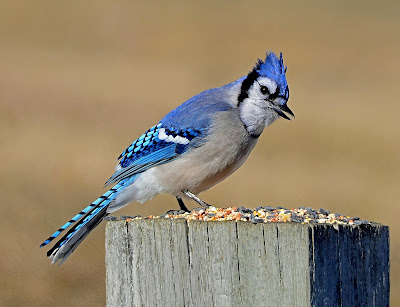Nature News: Witch Hazel
Nature News: Witch-hazel a very late bloomer
 |
| Witch-hazel fruit and flower Photo by Sue Pike |
I was up in the White Mountains last weekend and found witch-hazel blooming along the riverside trails. I was excited to see the flowers so early because witch-hazel flowers are a harbinger of winter.
Witch-hazel is probably my favorite shrub, primarily because witch-hazel is such a rebel in the way it stands up to the elements. It waits until the surrounding trees have dropped their leaves, when most other plants have battened down the hatches and begun to seriously prepare for winter to burst into bloom. Things happen earlier up north than they do down here — you won’t be seeing witch-hazel bloom around here until late October or early November, perhaps even later. But, it is something to seek out now so that you can watch for its spectacular late-fall display; a bloom of bright yellow at a time when the forest is turning gray and monotone as winter approaches.
It is thought that witch-hazel (Hamamelis virginiana) evolved this late-blooming strategy because of competition with other flowering shrubs — perhaps its close cousin the spring-blooming witch-hazel (Hamamelis vernalis). The thin yellow petals attract bees and flies late in the season because there is often nothing else in bloom. The flowers produce small amounts of nectar and lots of sticky pollen. Blooming this late in the season is risky, it needs to be warm enough for insects to fly around and pollinate. Up here in the northern part of its range only one percent of the flowers might be pollinated and produce fruit (Carole Gracie, Bedford Audubon Society).
Once pollinated, the eggs aren’t actually fertilized until spring. The fruit develops and matures in the fall at the same time the next year's flowers are opening up. The fruit dries into hard capsules that go dormant as winter approaches and wait until the following autumn to forcibly expel two shiny black seeds 20 or 30 feet into the surrounding forest. The ejection of the seeds is accompanied by a distinct snapping sound which gives the witch-hazel the common name “snapping hazelnut.” These seeds then take two more years to germinate (USDA Forest Service Bulletin). Despite these seemingly horrible reproductive odds, witch-hazel shrubs are abundant and can dominate the forest understory.
Witch-hazel has a long history of medicinal use and is probably the best known native medicinal plant in use today. Extracts of witch-hazel were used by Native Americans and are sold in drug stores today as an astringent and anti-inflammatory. Witch-hazel is also reported to be the best wood for divining rods, most likely because the forked limbs are so flexible. According to Mariellé Anzelone of the Brooklyn Botanical Garden, “the "witch" is derived from “wych,” an Old English word referring to the plant's pliant branches (also the root word for "wicker"). "Hazel" comes from the perceived resemblance of witch-hazel leaves to those of the Corylus (hazel) species.
Trying to identify the bewildering variety of shrubs that grow in our woods can be a bit overwhelming. Learning to recognize witch-hazel is a good first step - the seed capsules, the arching often zig-zagging branches, the broad leaves with wavy toothed edges and the scraggly yellow flowers are all very distinctive. It is a good time to start looking for them because fairly soon they’ll host the only flowers in the forest.
Susan Pike, a researcher and an environmental sciences and biology teacher at St. Thomas Aquinas High School, welcomes your ideas for future column topics. She may be reached at spike3116@gmail.com. Read more of her Nature News columns online at seacoastonline.com .



Comments
Post a Comment